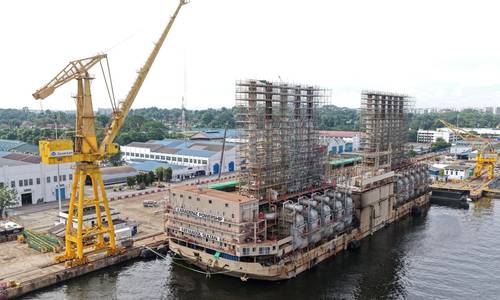North Sea Oil and Gas Producers Urged to Boost Well Interventions Ops
October 28, 2025

Operators are being urged to boost the efficiency of production from North Sea fields by extending the life of existing oil and gas wells, according to a new report from the North Sea Transition Authority (NSTA).
Interventions, industry’s term for this type of activity, can slow the production decline from these assets and potentially allow them to operate more efficiently for longer. Interventions are also cheaper, quicker and produce fewer emissions than drilling new wells, NSTA said.
Furthermore, well interventions can encourage supply chain companies – some of which are looking for work overseas due to a lack of activity in the U.K. – to keep their vessels in the North Sea, ensuring there is enough capacity to do the work.
NSTA deems this as key to retaining workers whose transferable skills can also support the energy transition.
Despite offering clear benefits, well interventions carried out in the UKCS fell to 425 in 2024 from 443 in 2023, continuing the downward trend of recent years, according to the NSTA’s annual Wells Insights Report.
But the interventions that were carried out proved their worth, delivering 37.5 million barrels of oil equivalent (boe) in 2024, equating to 34 days of average production.
There are opportunities to further enhance production by targeting existing fields, as 30% of the UKCS’s well stock was shut-in last year. While decommissioning will be the next step for many of those wells, a significant number could be reactivated. Without investment, they will be lost permanently, along with domestic reserves and resources.
Since early 2024, the NSTA has proactively engaged with eight leading operators to promote interventions and help them identify about 200 shut-in wells which could be reactivated. The NSTA also organized workshops which gave operators and supply chain companies a chance to discuss cost-effective ways to get this work up and running.
The project has already shown signs of success. More than 50 of those 200 wells have been brought back online, contributing more than 8 million boe. The NSTA continues to work with operators to bring as many of the remaining wells back into play as possible – and will reach out to more operators to uncover further well intervention opportunities in the coming months.
“The NSTA has been working closely with operators to highlight the potential for well interventions to deliver cost-efficient production and ensure existing fields continue to form an integral part of the energy system.
“While it is encouraging that some wells have been brought back into production, it is important for all operators to take urgent action by bringing the supply chain into the fold early, putting useful data on the table and making firm commitments to invest in the health of their wells,” said Keith Hogg, NSTA Wells Manager.
The NSTA is also keen to see operators drill more new wells on existing fields. Though often more expensive than interventions, development wells take advantage of infrastructure already in place, offering cost-effective production. Operators could make further savings by teaming up to organize development well drilling campaigns on multiple fields, NSTA suggests.
In 2024, operators invested $2.1 billion (£1.6 billion) in drilling 42 development wells, compared with $1.86 billion (£1.4 billion) for the same number of wells in 2023.
Forecasts indicate that operators plan to drill 44 developments wells in total between 2025 and 2027.






